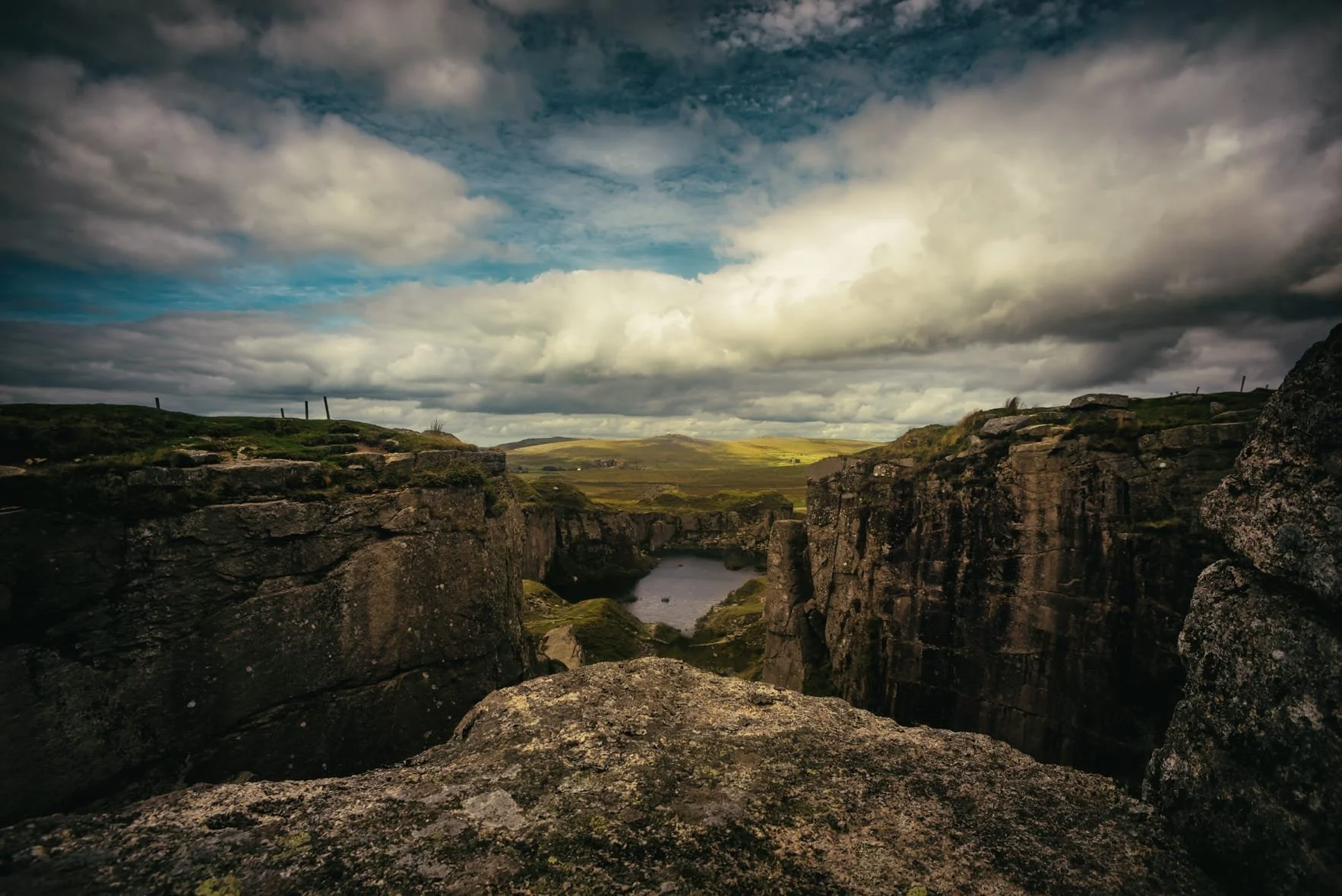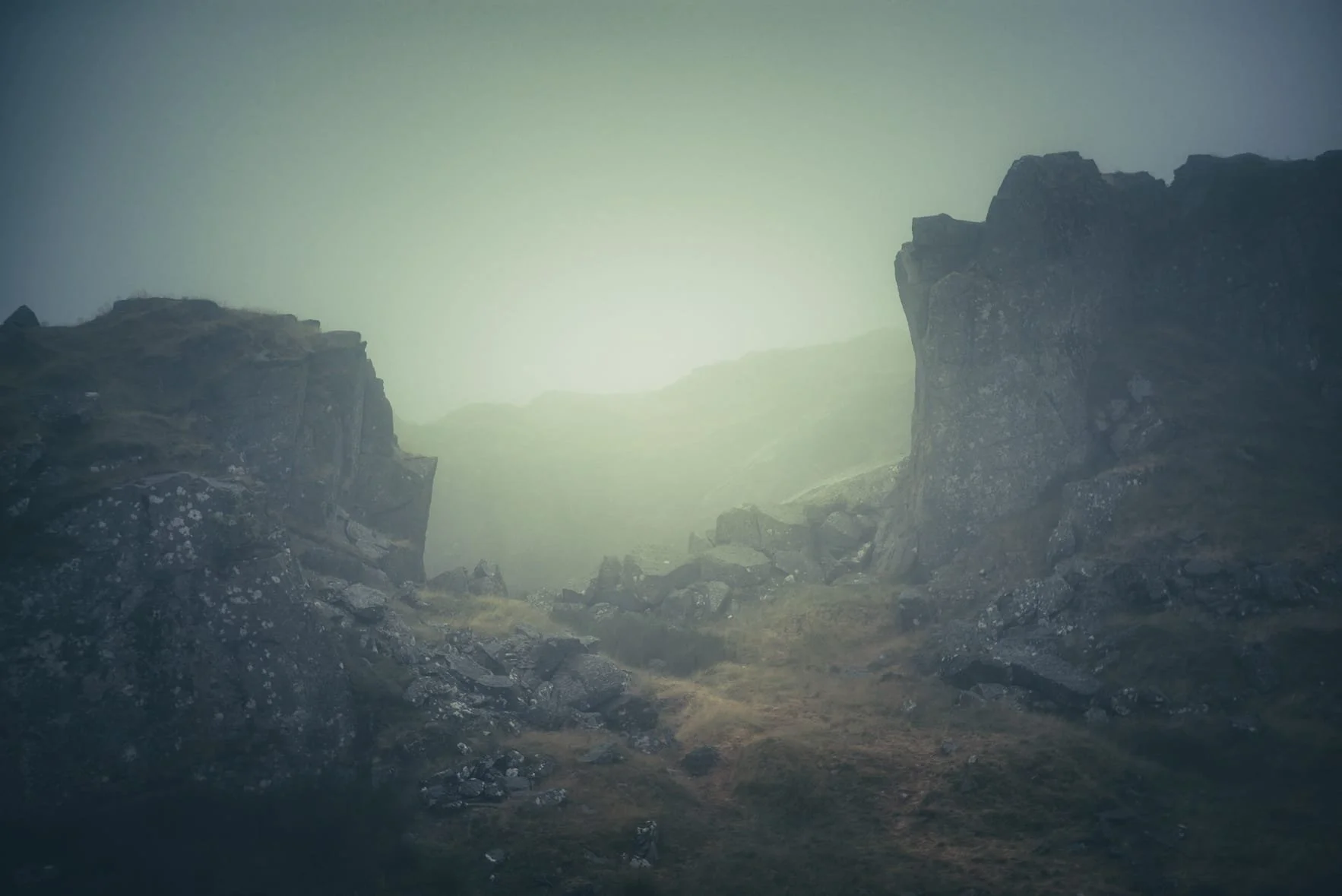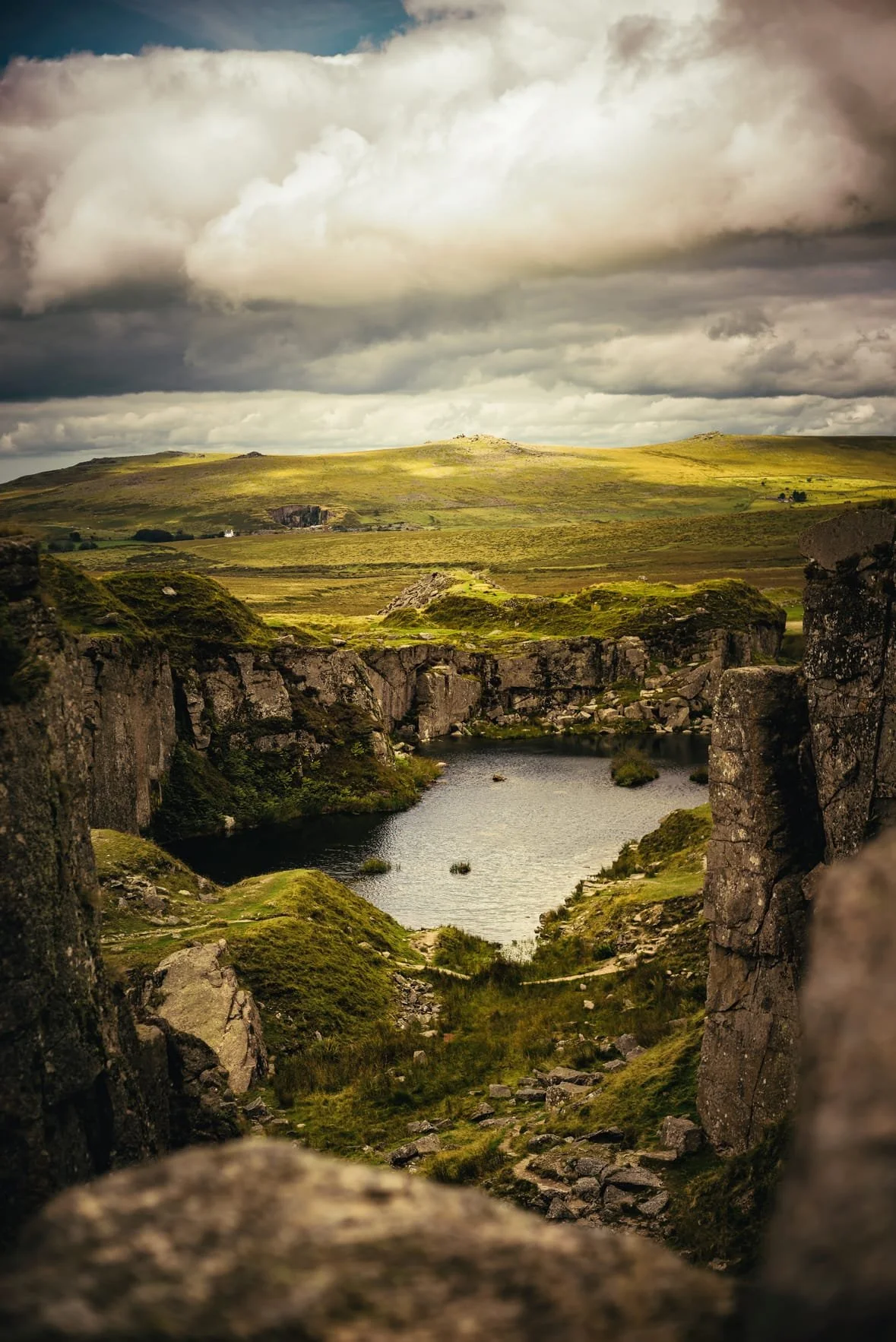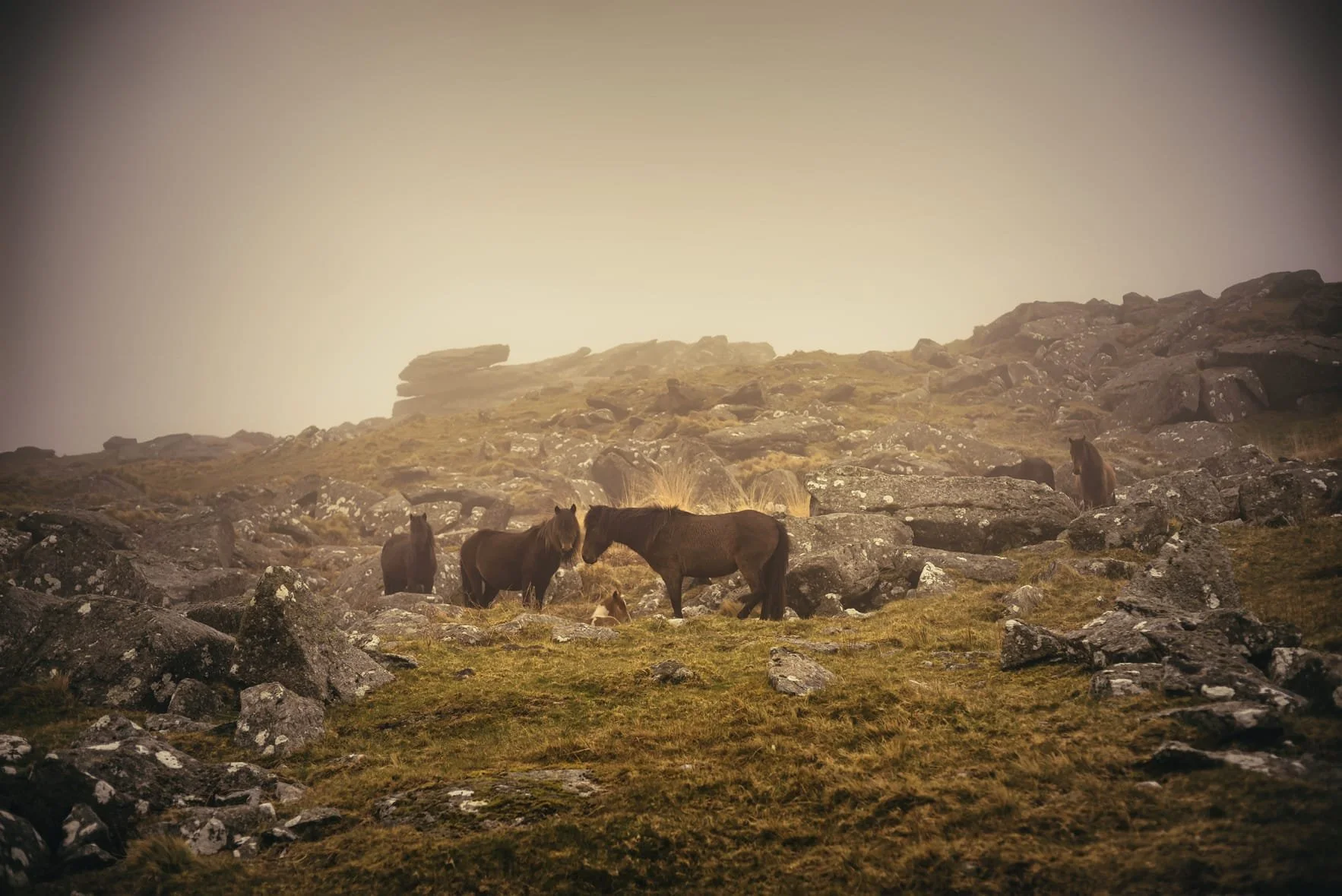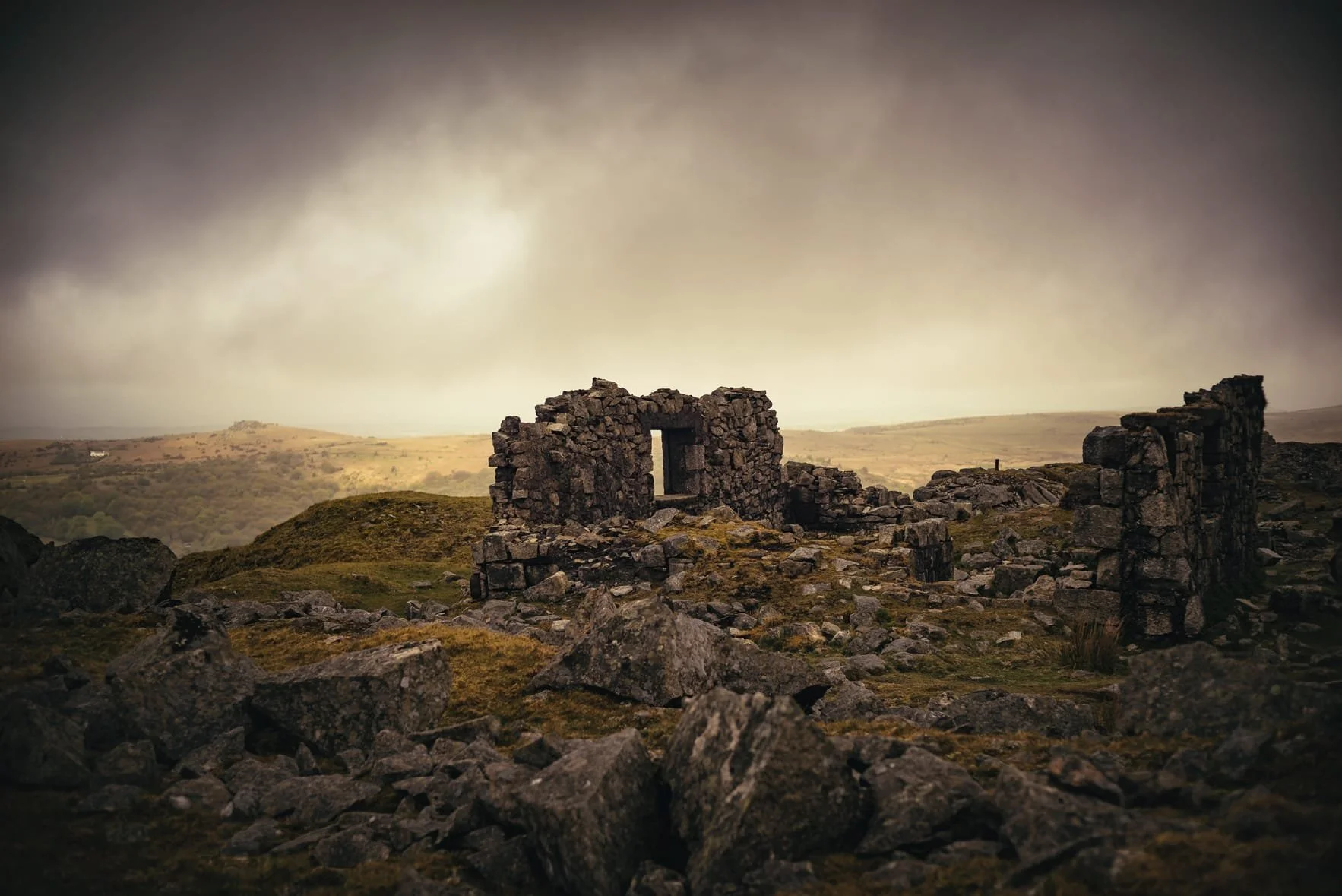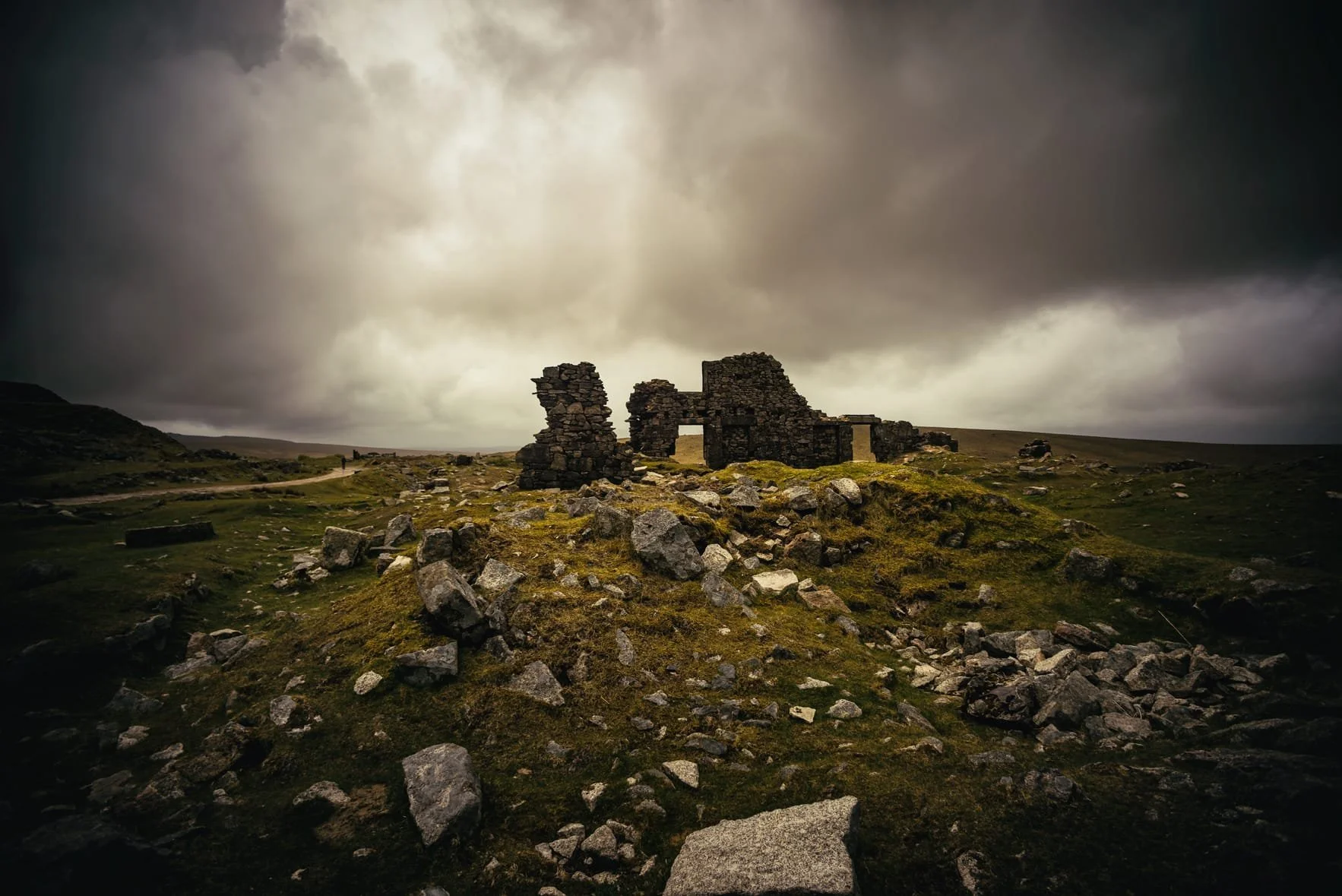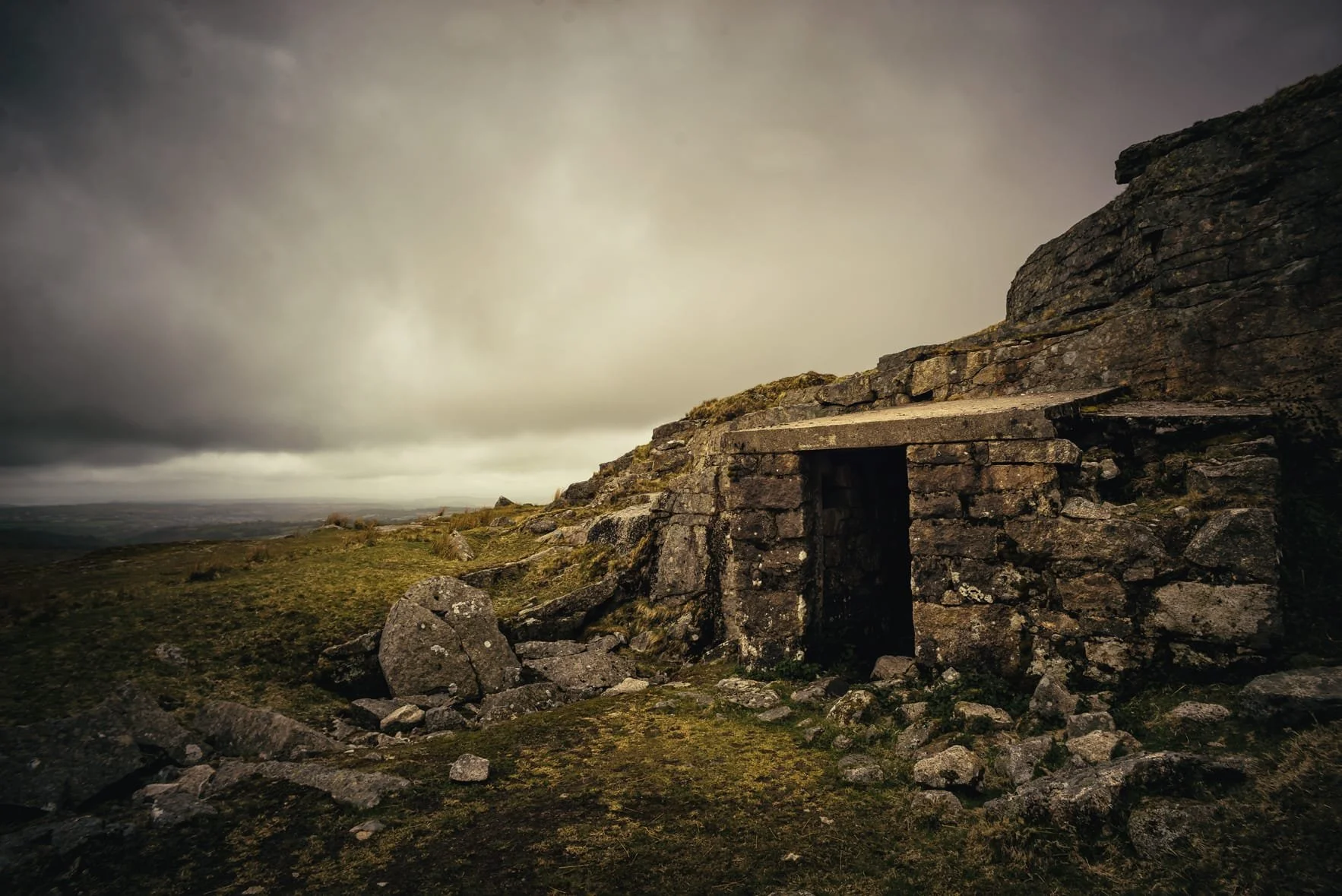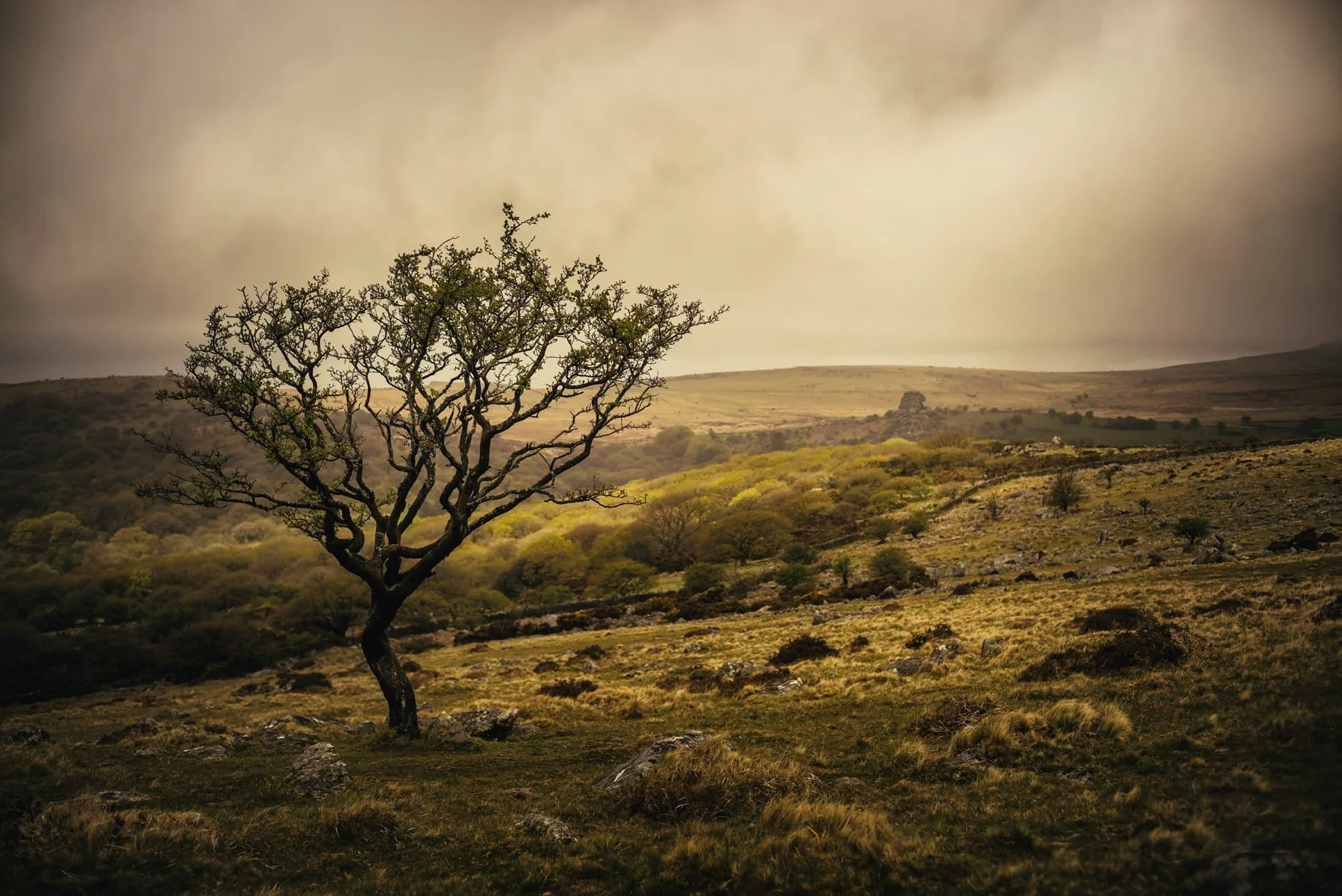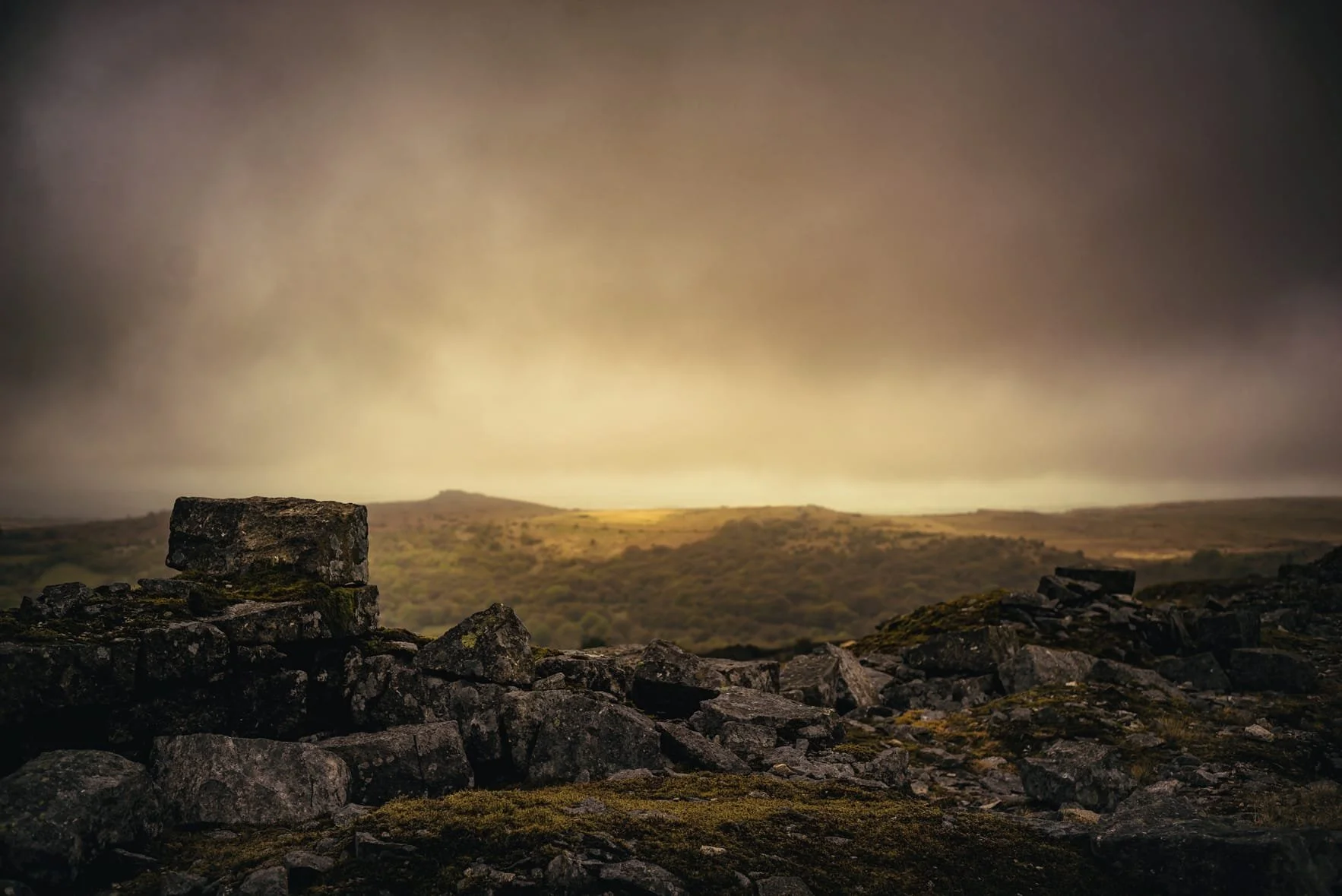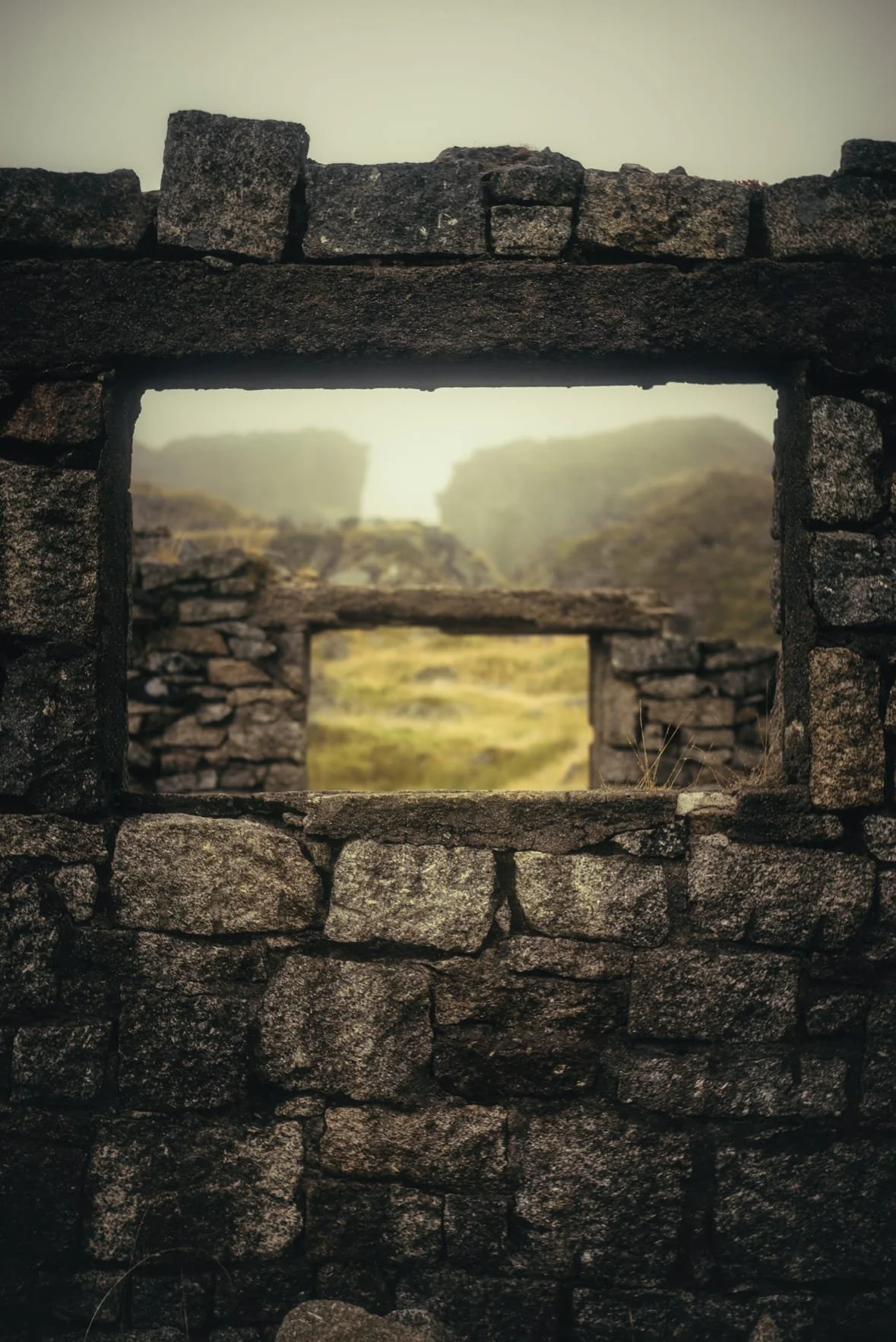Photography Walk with The Museum of Dartmoor Life - Foggintor Quarry & Swell Tor Quarry
Way back in November of 2024 I led a photography walk with The Museum of Dartmoor Life.
Technically, I walked with some of the volunteers from the museum, I didn’t walk with the museum (though that might have been splendidly entertaining) 😍
I’ve long been acquainted with Kristy, the curator/manager of the museum in Okehampton and she has successfully cajoled to do things for the museum on numerous occasions (not that I’m complaining; merely that I’d most likely not put myself forward without her prodding; I mean, gentle encouragement.)
If you’ve never visited, it’s a wonderful place to learn more about the way life has changed through the years on Dartmoor : dartmoorlife.org.uk
I’d checked in with Kristy the day before our walk as the weather forecast had been for heavy mist and we’d decided that as I’d planned a route that stayed mostly on a track (in fact predominantly an old railway track) we were fairly sure I’d not lose anybody!
I was joined by Rob of Discover Dartmoor who I had the pleasure of meeting when we both attended a Hill & Moorland Leader training course with Ibex Outdoor.
At the time I’d not completed my ITC Level 3 Award in Outdoor First Aid so (apart from his wonderful company) having Rob along was an extra comfort in case of emergencies.
As forewarned, we arrived at the car parking area near the entrance to Yellowmeade Farm, to discover that visibility was quite reduced. Plenty of good old fashioned Dartmoor mist to add some excitement and adventurous zeal to what (on a clear summers day) is a very safe and easily accessible walk indeed 💚
As a photographer I’m obviously going to be biased, a misty day is always a happy day.
We were, however, very careful to make sure that we didn’t lose anybody in the murkiness, taking in turns to follow the group, keeping a head count and looking out for uneven ground.
As you make your way along the old tramway from the small parking area on the edge of the B3357 (The Tavistock to Princetown Road) after you pass Yellowmeade Farm (I’ve noticed that sometimes it appears to drop the final “e”) you start to notice that the vestiges of railway tracks are visible in the trail. A quick look at the map below shows that these remains are part of the quarry railway, and not the municipal Yelverton to Princetown Railway.
As you continue to traverse the well worn trail and you begin to approach the ruins of Eva’s Farm you will start to notice the etched stone footings that once held steel tracks to move stone around the quarry.
Before the walk I had ascertained that it wasn’t the best idea to enter the flooded quarry area from the Northern entrance (due to the slippery rocks and substantial drop) however, I took time to show the volunteers the safer route into the area from the other side and suggested what to look out for if they visited again in better weather.
The flooded area of Foggintor Quarry - images not from the day of our visit 😁
There are a plethora of things to see on the walk around.
This area is known as Foggintor Quarry (previously it was called Royal Oak) and it is famously known for providing granite for Nelsons Column …
“Extensive quarries in this rock were formerly worked near Haytor, and much of London Bridge was built from stone obtained there. These quarries are now only worked in a small way, for building-stone and monumental stone. The group of quarries near Foggintor and the Princetown railway have now taken the place of the Haytor quarries and have supplied much stone for Plymouth and its breakwater. The Nelson Monument in Trafalgar Square is built of Foggintor granite. ”
It seems odd to me that not much is made of the fact that the quarry supplied granite for work in Plymouth (including The Breakwater) only that it was used in a few famous London landmarks … I guess that is the nature of marketing 🤣
Whilst researching the subject I found several advertisements for the granite that again echoed the “used in Nelsons Column” mantra … indeed it seems slightly weird to me that history records that it was Granite from Haytor Quarry that was used in London Bridge, yet there are unused corbels seemingly abandoned on the tramways near Swell Tor Quarry. Perhaps the quality of the Swell Tor granite wasn’t up to scratch … who knows?
It should be said that a Mr. William Johnson speaking to the British Association of Builders describes
“Foggintor granite as the best in this country for steps, plinths, strings, blocking courses, ashlars, pedestals, obelisks, columns, cornices, and indeed for all other purposes of architecture”
Perhaps, more interestingly, Mr Johnson (and his brother) were the owners of pretty much all the quarries on Dartmoor at the time 🤣 … who said corruption was a modern thing.
“Mr. Nixon’s Statue of William IV - Now that the scaffolding and hoard are removed, we will mention that the whole of this monument including the figure, is executed in Foggintor granite, and that the total cost is £2200. Peterhead granite would have been preferred on account of colour, but the price asked for it was so high as to prevent its adoption.”
I personally I find the mundane nature of the article really humanizing, mentioning the price and that another source would have been preferred, but cost was a factor … it makes you realise that people are people, whatever the era 🤣
Once we’d checked out the area around Foggintor Quarry - The ruins of Eva’s Farm … the remnants of Hill Cottages and the Managers House, Gibbs Cottage and the numerous other interesting aspects (as well as the aforementioned flooded quarry) … we cut across towards Swell Tor (Swelltor) Quarry.
The mist was thick and the drop into both quarry pits is rather treacherous, so carefully wandering is required.
Below the lower quarry is a fairly well preserved ruin of a Blacksmiths Shop.
After stopping at the ruins of the Blacksmith Shop for a snack and a cuppa, we continued along the route of the old railway, stopping to check out the abandoned Corbels alleged to be for London Bridge.
Past the remains of Kings Tor Halt … an old railway siding
“I invited Paul to organise a walk on Dartmoor, with photo opportunities, for some of the volunteers at the Museum of Dartmoor Life.
He asked many questions about what we required and the abilities of our walkers and from that planned a very accessible route.
We met on the most theatrical of misty mornings which was amazing for photographs and the mist seemed to clear whenever there was another spectacular view to admire.
Paul’s knowledge of the area was vast and we all learned a great deal about its history and he also gave us hints to improve our photos.
We felt safe in Paul’s hands, so we did not have to worry about maps and directions and everyone agreed that it was a marvellous adventure.
I would recommend Paul as a guide to anyone.”
If you’re interested in a walk around the area, or, anywhere on Dartmoor; either for photography purposes, or just for the sheer pleasure of experiencing the outdoors; feel free to get in touch 😍
Time restraints, the weather and walkers capabilities meant we only managed to visit a small proportion of the amazing history on offer.
As a photographer I probably shouldn’t miss the opportunity to show off some of the other photographs I’ve taken in the area over the last few years …
For more information and further ideas for your walk I recommend the following brilliantly researched and knowledgeable website articles :
From https://princetownrailway.co.uk - a brilliant and informative website about the railway that ran between Yelverton and Princetown
From https://www.legendarydartmoor.co.uk - one of my favourite websites about Dartmoor
From https://dartmoorexplorations.co.uk - a splendid and wonderfully well researched collection of walks, discoveries, insights and pictures of Dartmoor
Dartmoor Mission Hall And The Foggintor Quarry School
Foggintor School & School House
Two “Old Ladies of the Moor” at Wheal Lucky Cottage, Rundlestone
Finally, if you’re looking for the ultimate Dartmoor guide to antiquities and bits that are worth visiting, you can’t go wrong with the incredible Dartefacts website … it’s now a subscription based resource (with a free option), but it is truly worth it’s weight in gold 😍 I have found many many interesting aspects to explore through this great website.
As I’m planning on eventually doing a great deal more guided photography tours, I’ve been slowly (almost subconsciously) been gathering together little tidbits of information from various sources. A few of these can be found on YouTube I find that sometimes actually seeing things brings them more to life than maybe the stale scribblings in a book … I adore this old BBC short … there’s lots of footage of the Foggintor area, and the railway … as well as a marvellous look into life in the 50’s on Dartmoor.
Another great visual historical resource is the fantastic Railway YouTube Channel provided by https://aarchivefilms.com/
Here’s a bonus piece of information about the area that I can guarantee you won’t read about elsewhere; which is; nonetheless pretty interesting and surprisingly informative … back in the late 80’s The Comic Strip Presents filmed the episodes entitled South Atlantic Raiders partly on Dartmoor and quite a bit near Foggintor Quarry … watch for the building in the background at roughly 29 minutes …
And here’s the reason I know about this …
That’s me behind Lemmy “dying” at about 30 minutes into episode 2 🤣
You can clearly see how much of Hill Cottages has fallen down in the last 35 years as the camera pans across the motley crew of rebel soldiers … they filmed much of the stuff with me in it near Gibbs Cottage and very little of that remains today.
Also, look how cool I was 😜












